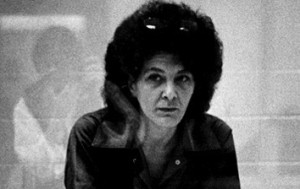 I spoke at the Baltimore Book Festival the other day, on a panel examining tactics the government has used against social movements throughout U.S. history. For my portion of the panel, I argued that we, as a culture, often regard periods of government repression as having an inception and a conclusion. They are finite eras, “mistakes of the past” or “dark chapters of our history.” A more accurate assessment is that the backlash against social movements is constant; it exists on a continuum, sometimes with peaks or valleys, but a constant presence nonetheless.
I spoke at the Baltimore Book Festival the other day, on a panel examining tactics the government has used against social movements throughout U.S. history. For my portion of the panel, I argued that we, as a culture, often regard periods of government repression as having an inception and a conclusion. They are finite eras, “mistakes of the past” or “dark chapters of our history.” A more accurate assessment is that the backlash against social movements is constant; it exists on a continuum, sometimes with peaks or valleys, but a constant presence nonetheless.
For instance, it’s striking just how little the tactics of repression have varied from one era to the next. Dominique Stevenson (co-author of Marshall Law: The life and times of a Baltimore Black Panther) echoed this in her portion of the event. Unfortunately Susan Rosenberg wasn’t able to attend because of a family emergency, but her experiences offer another salient parallel.
Rosenberg worked with many radical movements of the 1960s and 1970s, and had been sought as an accomplice in the prison break of Assata Shakur. In 1984, she was charged with possession of explosives and weapons and sentenced to 58 years in prison. It was the longest sentence ever for such a charge, and the disproportionate treatment was clearly due to her political beliefs. She served 16 years in prison, and her sentence was commuted in 2001 by President Clinton.
For part of her sentence she was imprisoned in the Lexington High Security Unit. In Green Is the New Red I discuss the HSU in the context of modern-day Communications Management Units. Here’s an excerpt:
The government has reason to be secretive about this program [Communications Management Units], because similar experiments have not been well received by civil rights and human rights organizations. The Bureau of Prisons has a history of operating pilot programs outside the confines of the Constitution.
For example, the High Security Unit in the federal women’s prison in Lexington, Kentucky, was created in the 1980s to house political prisoners belonging to an organization that, according to the Bureau of Prisons, “attempts to disrupt or overthrow the government of the U.S.†The Lexington HSU existed belowground, in total isolation from the outside world and with radically restricted prisoner communications and visitations. The women were subjected to constant fluorescent lighting, almost daily strip searches, and sensory deprivation. The purpose of these conditions, according to a report by Dr. Richard Korn for the ACLU, was to “reduce prisoners to a state of submission essential for ideological conversion.†The Lexington HSU was closed in 1988 after an outcry by Amnesty International, the ACLU and religious groups.
CMUs are not the same as the Lexington HSU. In some ways they are less severe, in some ways they are more pernicious. The danger they both pose is that they are extensions of a parallel legal system that are established for political prisoners outside the confines of the Constitution.
- You can learn more about Susan Rosenberg in her excellent book, An American Radical: A political prisoner in my own country.
- You can learn more about Communications Management Units here. Daniel McGowan is currently imprisoned in a CMU. Please consider writing and supporting him.